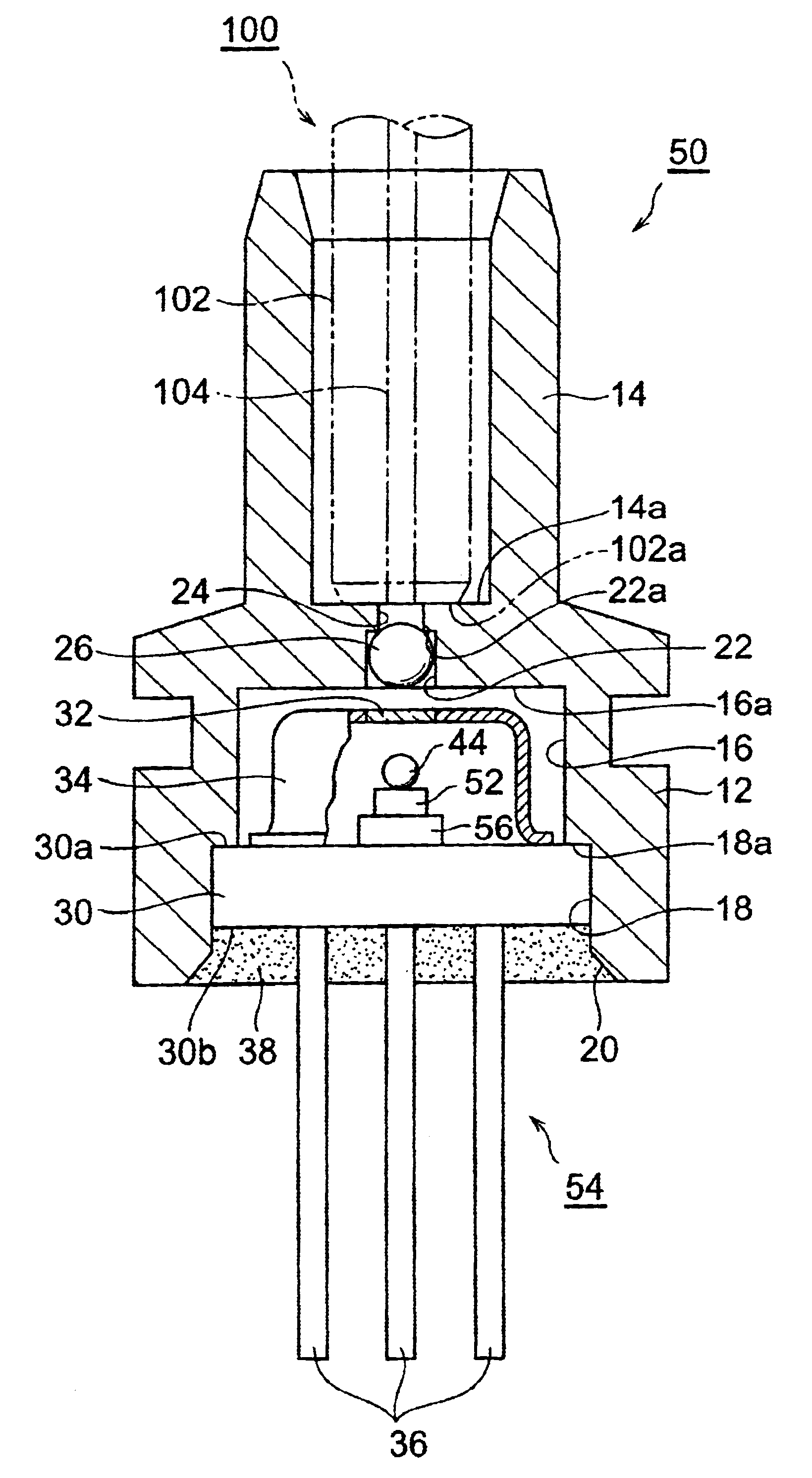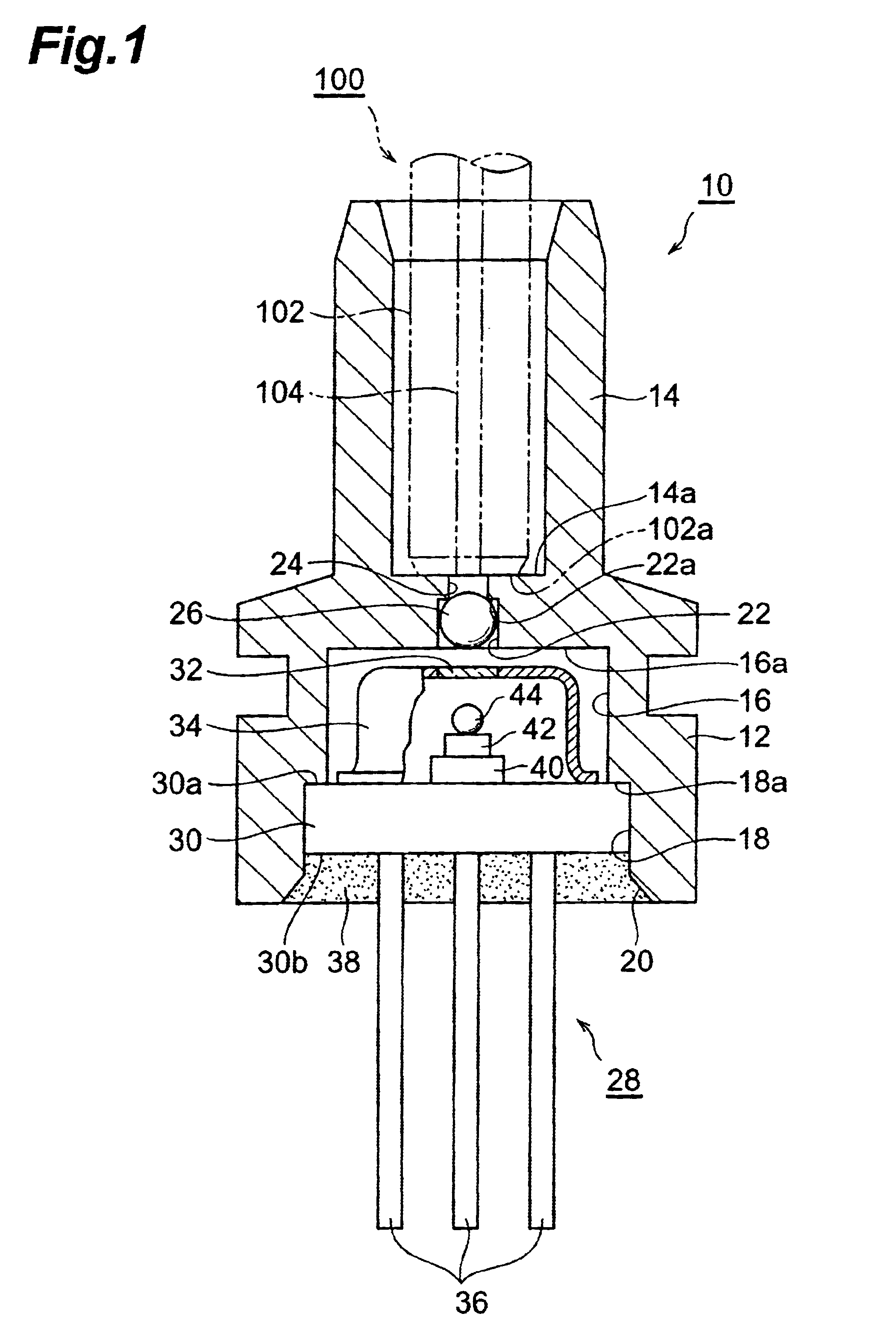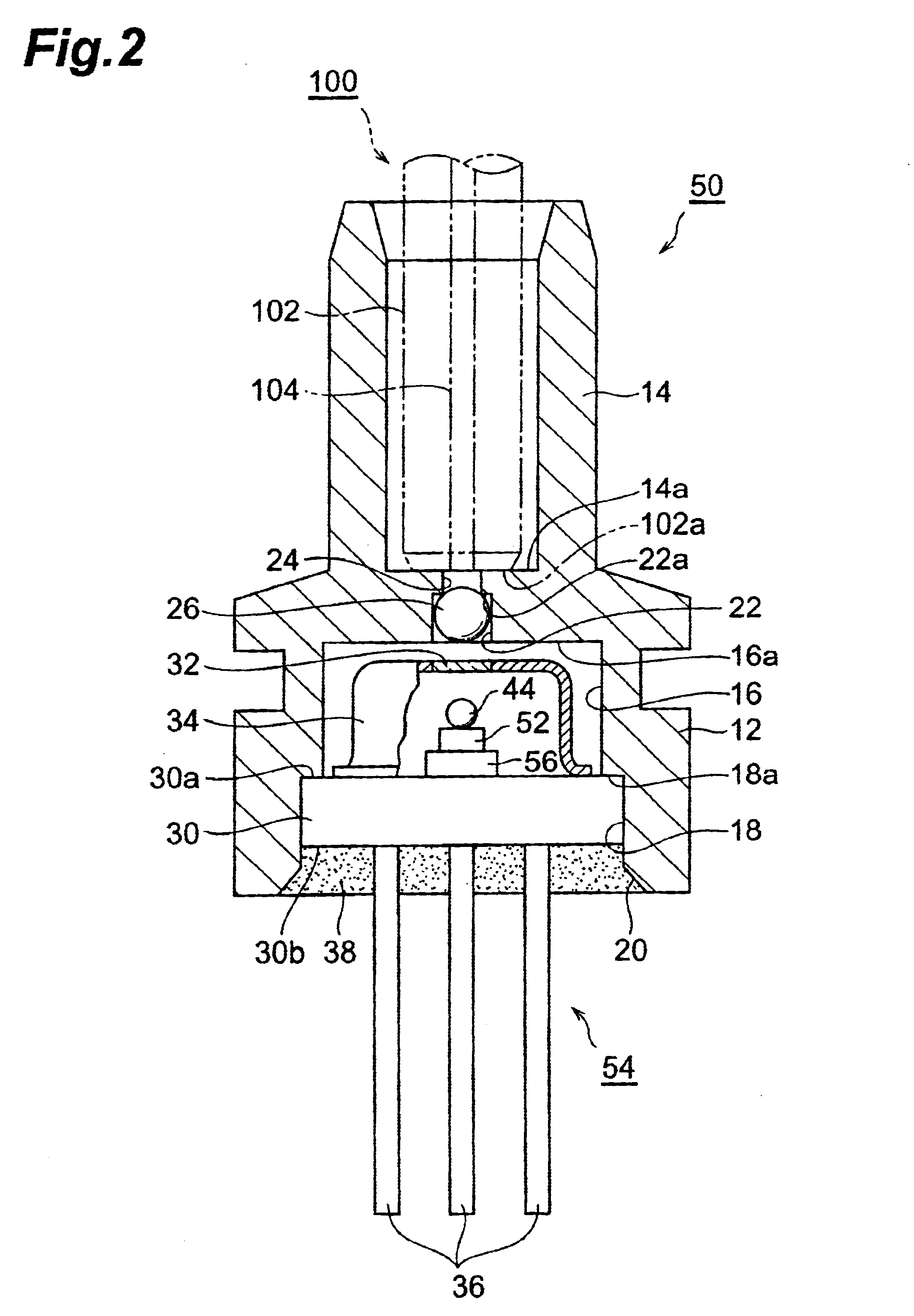Optical module
- Summary
- Abstract
- Description
- Claims
- Application Information
AI Technical Summary
Benefits of technology
Problems solved by technology
Method used
Image
Examples
first embodiment
[First Embodiment]
[0015]As shown in FIG. 1, optical module 10 has housing 12 integrally molded of epoxy resin. Sleeve 14 with ferrule 102 of optical fiber 100 being fitted therein is formed at one end of housing 12, and bottom surface 14a inside sleeve 14 functions as a ferrule stopper in contact with ferrule end face 102a. The optical fiber 100 is a multi-mode optical fiber for optical communications and has core 104 with the core diameter Φ of 50 μm.
[0016]On the other hand, recess 16 of a circular cross section is formed at the other end of housing 12. Larger-diameter recess 18 of a circular cross section having the diameter greater than that of recess 16 is formed on the aperture side of the recess 16, and inner chamfer 20 is made at an aperture portion of this larger-diameter recess 18. Smaller-diameter recess 22 of a circular cross section having the diameter smaller than that of the recess 16 is formed in bottom surface 16a of recess 16 and a light passing hole 24 is formed be...
second embodiment
[Second Embodiment]
[0029]Another embodiment of the optical module according to the present invention will be described below with reference to the drawing. In the optical module according to the present invention, the optoelectronic device applicable thereto may be one having a photodetector such as a photodiode, or one having an optical waveguide element. The optical module 50 shown in FIG. 2 is one to which optoelectronic device 54 having photodiode 52 is applied. In the description hereinafter, identical or similar portions to those in the above embodiment will be denoted by the same reference symbols, without redundant description thereof.
[0030]In optical module 50, as shown in FIG. 2, optoelectronic device 54 with photodiode (photodetector) 52 is housed in housing 12. In the hermetic space inside cap 34 of optoelectronic device 54, sub-mount 56 is die-bonded on one end face 30a of stem 30, and photodiode 52 is die-bonded on this sub-mount 56. Furthermore, ball lens 44 having th...
PUM
 Login to View More
Login to View More Abstract
Description
Claims
Application Information
 Login to View More
Login to View More - R&D
- Intellectual Property
- Life Sciences
- Materials
- Tech Scout
- Unparalleled Data Quality
- Higher Quality Content
- 60% Fewer Hallucinations
Browse by: Latest US Patents, China's latest patents, Technical Efficacy Thesaurus, Application Domain, Technology Topic, Popular Technical Reports.
© 2025 PatSnap. All rights reserved.Legal|Privacy policy|Modern Slavery Act Transparency Statement|Sitemap|About US| Contact US: help@patsnap.com



